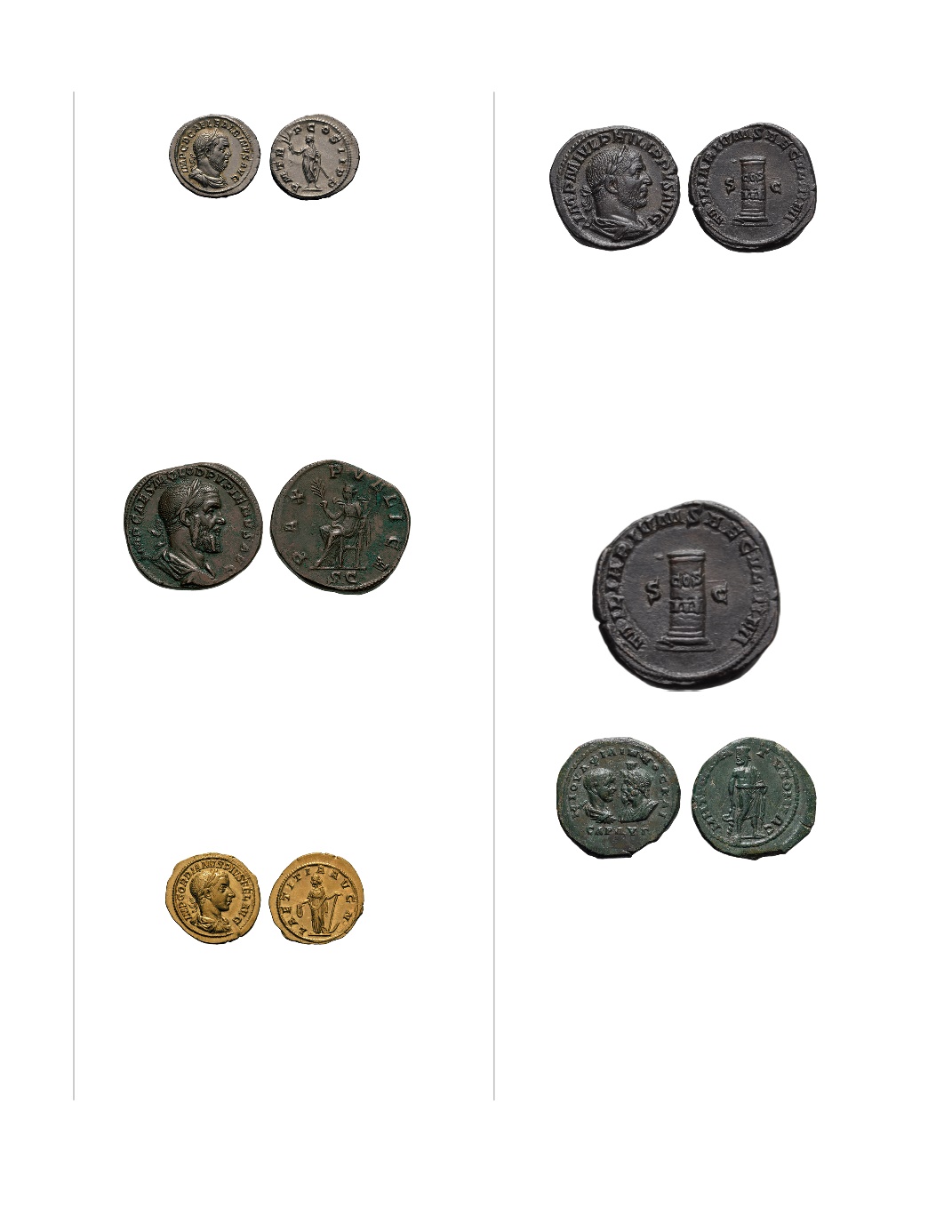

52
206.
Balbinus.
238 AD. Denarius, 3.23g (7h). Rome.
Obv: IMP C D CAEL BALBINVS AVG Bust lau-
reate, draped, cuirassed right, seen from front. Rx:
P M TR - P COS II P P The Genius of the Senate
standing left holding branch and short scepter. BM
26. Cohen 20 (10 Fr.). RIC 5. Wonderful Mint State
$1,000
Ex Lanz 80, 26 May 1997, lot 536
.
Sharp Pupienus Sestertius
207.
Pupienus.
238 AD. Sestertius, 19.28g (11h). Rome.
Obv: IMP CAES M CLOD PVPIENVS AVG
Bust laureate, draped, cuirassed right. Rx: PAX -
PVBLICA around, S C in exergue, Pax seated left
holding branch and scepter. BM 49, pl. 46 (same
rev. die). Cohen 23 (15 Fr.). RIC 22a (S). Brown
patination. Virtually flawless portrait of Pupienus.
Near Mint State/EF
$6,500
Ex Gemini VIII, 14 April 2011, lot 404. Ex Spink,
July 2000, Collection G. Powell, lot 1452
.
208.
Gordian III.
238-244 AD. Aureus, 4.98g (6h).
Rome, 240-3 AD. Obv: IMP GORDIANVS PIVS
FEL AVG Bust laureate, draped, cuirassed right. Rx:
LAETITIAAVG N Laetitia standing left holding
wreath and placing left hand on anchor that rests
on ground behind her. RIC 101 (R). Calicó 3292a.
Cohen 119 (100 Fr.). Mint State
$6,500
Acquired from Leu Numismatik, c. 2002
.
Millennium Issue
209.
Philip I.
244-249 AD. Sestertius, 20.81g (1h).
Rome, 248 AD. Obv: IMP M IVL PHILIPPVS
AVG Bust laureate, draped, cuirassed right. Rx:
MILIARIVM SAECVLVM S - C Cippus inscribed
COS / III. RIC 157a (R). Cohen 95 (15 Fr.).
Our coin seems to be from the same dies as the
specimen illustrated by Cohen (Dardel engraving).
Exceptionally powerful portrait. Near Mint State
$3,000
Ex CNG 93, 22 May 2013, lot 1217
.
210.
Philip II as Caesar and Serapis.
AE 28, 13.18g
(1h). Moesia Inferior, Tomis. Obv: M IOVΛ
ΦIΛIΠΠOC KAI around, CAP AVΓ in exergue,
Bare-headed, draped, cuirassed bust of Philip II fac-
ing draped bust of Serapis wearing kalathos. Rx:
MHTPO ΠON - TOV TOMEΩC Asclepius standing
right, head left, holding staff entwined by serpent.
Varbanov 5786 (same dies). AMNG 3599 (2 spec.).
About EF
$400
An unusual titulature for Philip II, occurring on
only one of his four obverse dies at Tomis: he is
called Augustus, though he is still only Caesar
(bare-headed, and not IMP). See AMNG, p. 909
.
Enlargement


















